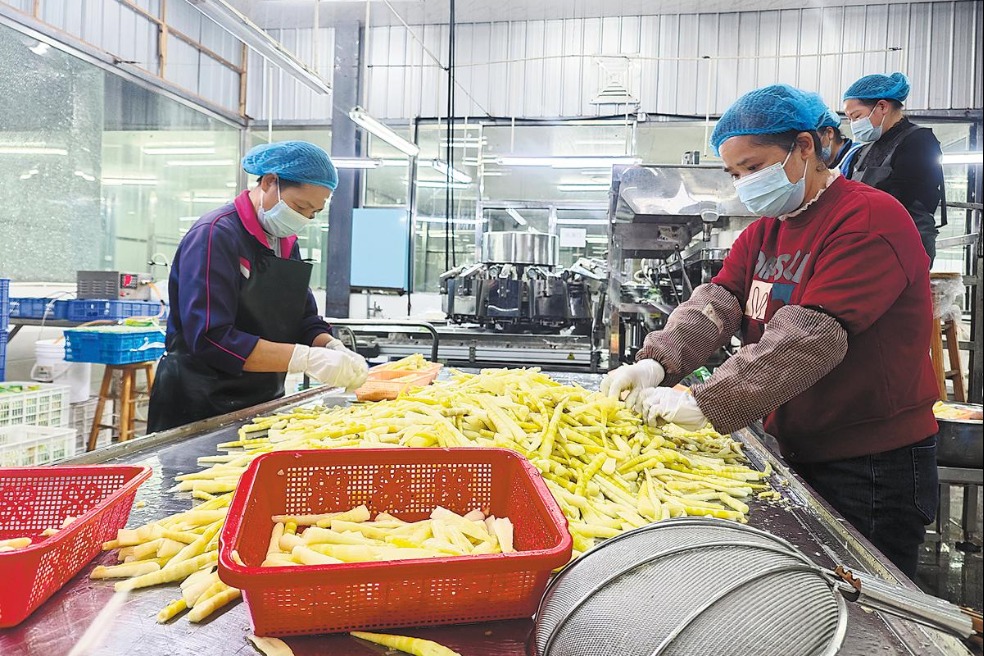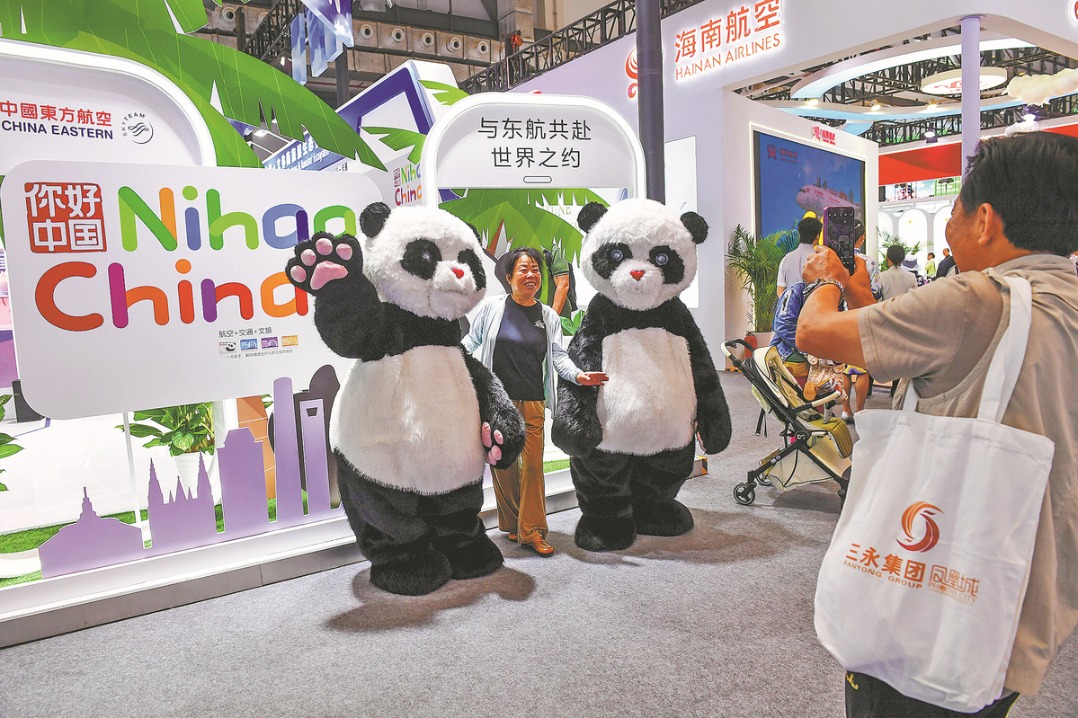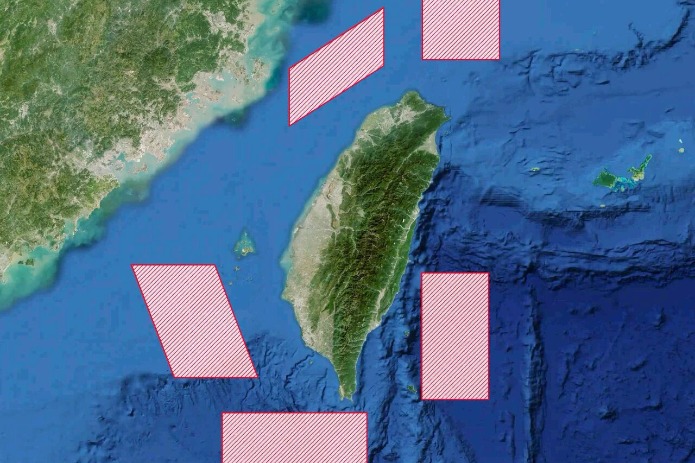Agriculture sector reflects nation's development


China has contributed much more than any other country to global hunger reduction. Thanks to rapid agricultural and economic reforms, China has made significant strides in hunger reduction over the past more than four decades. By solving the hunger problem in the country, Beijing met its Millennium Development Goals of halving the number of hungry people between 2000 and 2015 and contributed to a two-thirds decrease in the global number of hungry people.
On the food supply side, China stabilized food production years ago. Its grain output has been above 600 billion kilograms since 2012, with the grain production in 2023 touching a new high of 695 billion kg, with per capita of this grain reaching 490 kg, 22.5 percent higher than the international food security line (400 kg).
Besides, China is 95 percent self-sufficient in grains, with the rate for rice and wheat, the two primary staples, being 100 percent. The production of vegetables, fruits, meat and aquatic products, too, has increased significantly. Due to this diversification of food production, accompanied by income growth, people's dietary habits, too, have changed. People today focus more on quality, and consume more vegetables, fruits, eggs, and aquatic and dairy products.
How did China achieve this success?
The development of agriculture and increase in food production can be divided into four stages. The first stage was from 1949 to 1977. When the People's Republic of China was founded in 1949, the country faced many challenges. Its total grain production was only 113 billion kg and per capita grain share 208.9 kg. During this period, China's focus was on increasing grain production.
The second stage was from 1978 to 2014. Reform and opening-up, particularly the introduction of the household production responsibility system, dramatically increased grain production and supply, with per capita grain surpassing the global food security line in 2012. After joining the World Trade Organization in 2001, China's food supply became more diversified despite just a moderate increase in imports.
The third stage was from 2015 to 2021.While ensuring stable food supply, the conservation of natural resources and the environment became a priority for the government. As a result, the government introduced the "double reduction "policy, aimed at reducing the use of fertilizers and pesticides, in 2015. This period saw significant improvement in the quality and safety of food products, and the adoption of more environment-friendly practices.
The ongoing fourth stage, which began in 2022, has seen the 20th National Congress of the Communist Party of China in 2022 emphasizing the importance of establishing a diversified food supply system based on the "big food" concept. Over the years, people's food consumption and preferences have diversified, tending to veer toward balanced and nutritious diets. And the government has introduced various policies, used technological innovations and invested heavily in various sectors to meet people's ever diversifying demand for food.
Food security has always been a priority for China. The food security policy of 2013 is about "self-reliance, domestic focus, ensuring production capacity, moderate imports, and technological support", and the No 1 Central Document of 2023 highlights the need for "establishing a big food concept and accelerating the construction of a diversified food supply system".
As for technological innovations, they span many fields, including plant protection, disease prevention and control, precision cultivation, facility agriculture, agricultural machinery and equipment, and green development.
Reforms of agricultural taxes and subsidies, too, have played a vital role in ensuring food security. On Jan 1, 2006, China abolished the 2,600-year-old agricultural tax, alleviating the economic burden on farmers, and contributing to the modernization of agriculture and the development of the rural economy. In 2016, China integrated the subsidies for high-quality crop seeds, direct subsidies for grain farmers and comprehensive subsidies for agricultural inputs into a single support and protection system, leading to a more efficient and targeted support system for agriculture.
China's investment in agriculture covers several crucial aspects, including animal and plant breeding and cultivation, the seed industry, green development of agriculture and rural areas, innovations in agricultural technology, training of agricultural and rural talents, building rural infrastructure including the construction of digital villages and promotion of intelligent agriculture. According to the National High-Standard Farmland Construction Plan (2021-30), China will build large-scale, high-standard farmlands through fiscal investment and social capital participation in the coming decade.
Countries across the world face similar food security challenges, from climate change to resource degradation, extreme weather events and malnutrition. Population pressure on many countries magnifies the effects of these challenges on food security, especially because the options for mitigating and adapting to climate change are limited. Therefore, China's experiences in this regard provide important lessons for other countries.
Proper sequencing and setting the right priorities are important. Since the Chinese people were wholly dependent on the agriculture sector in the early stage, China's reforms, starting with agriculture, ensured that most of the population benefited from them. The reform and development of the agriculture sector provided the prerequisite for the growth of the manufacturing and service sectors, which succeeded in significantly reducing poverty and hunger in the country.
Establishing a diversified food supply system based on the "big food" concept is China's way of helping transform the global food system. This approach calls for a shift from the heavy reliance on farmland to the comprehensive utilization of the potential of forests, grasslands, rivers, lakes, seas and the food industry.
Optimizing dietary patterns for ensuring nutritional health and protecting the environment is another important policy direction. Increasing the consumption of whole grains, fruits and soy products, and decreasing consumption of ultra-processed foods, refined grains and red meat can play a significant role in facilitating this transformation.
Fan Shenggen is the dean of the Academy of Global Food Economics and Policy and chair professor at China Agricultural University. Meng Ting is an associate professor in the College of Economics and Management at China Agricultural University.
The views don't necessarily reflect those of China Daily.
If you have a specific expertise, or would like to share your thought about our stories, then send us your writings at opinion@chinadaily.com.cn, and comment@chinadaily.com.cn.


































